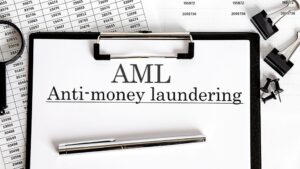Sanctions screening is a control employed within Financial Institutions (FIs) to detect, prevent and manage sanctions risk. Screening should be undertaken as part of an effective Financial Crime Compliance (FCC) program, to assist with the identification of sanctioned individuals and organizations, as well as the illegal activity to which FIs may be exposed. It helps identify areas of potential sanctions concern and assists in making appropriately compliant risk decisions.
Wolfsberg Group: Guidance on Sanctions Screening
In light of the continuous expansion and growing complexity of international sanctions regulations, the objective of this paper is for the Wolfsberg Group to guide FIs as they assess the effectiveness of their sanctions screening controls, whether automated, manual, or both.
Most FIs will deploy two main screening controls to achieve their objectives: transaction screening and customer screening. Transaction screening is used to identify transactions involving targeted individuals or entities. Customer or Name screening is designed to identify targeted individuals or entities during on-boarding or the lifecycle of the customer relationship with the FI.
Together, transaction and customer screening are designed to form a robust set of controls for identifying sanctions targets. It should be recognized that there are some limitations in the way in which these controls are managed and should always be employed as part of a wider FCC program.
As with the management of all financial crime risks, an FI should first identify and assess the sanctions risks to which it is exposed and implement a sanctions screening program commensurate with its nature, size, and complexity. In doing so, consideration needs to be given to:
The jurisdictions where the FI is located, and its proximity geographically, and culturally to sanctioned countries.
What customers the FI has international or domestic, where those customers are located and what business they undertake.
The volume of transactions and distribution channels.
What products and services do the FI offer and whether those products represent a heightened sanctions risk, for example, cross-border transactions, foreign correspondent accounts, trade-related products, or payable-through accounts?
OFAC emphasizes the use of sanctions screening as a control, the fundamentals of which are derived from legal and regulatory requirements and expectations, as well as global industry best practices. It is not intended to suggest all organizations should apply all elements in this guidance to the same level, rather, it attempts to demonstrate where sanctions screening can be an effective part of a wider sanction compliance program, where it has limitations as a control, and where a risk-based approach is required, notwithstanding the strict liability nature of sanctions compliance.
Consideration has been given to topics such as what is meant by sanctions screening, looking at both reference data and transaction screening, the timing of screening, technology and the use of automated systems, the criteria for alert investigation, as well as testing and quality assurance.
Final Thoughts
In summary, sanctions screening is an important control in the prevention of financial crime risk that FIs may otherwise face. It must be implemented and maintained as part of a broader set of financial crime compliance controls and within the FI’s risk appetite. While acknowledging the need to meet regulatory and legal obligations and requiring the highest levels of effectiveness in identifying sanctioned parties and locations, the Wolfsberg Group believes FIs should strive to adopt a risk-based approach to sanctions screening and consider all aspects of a comprehensive sanctions screening control framework.





